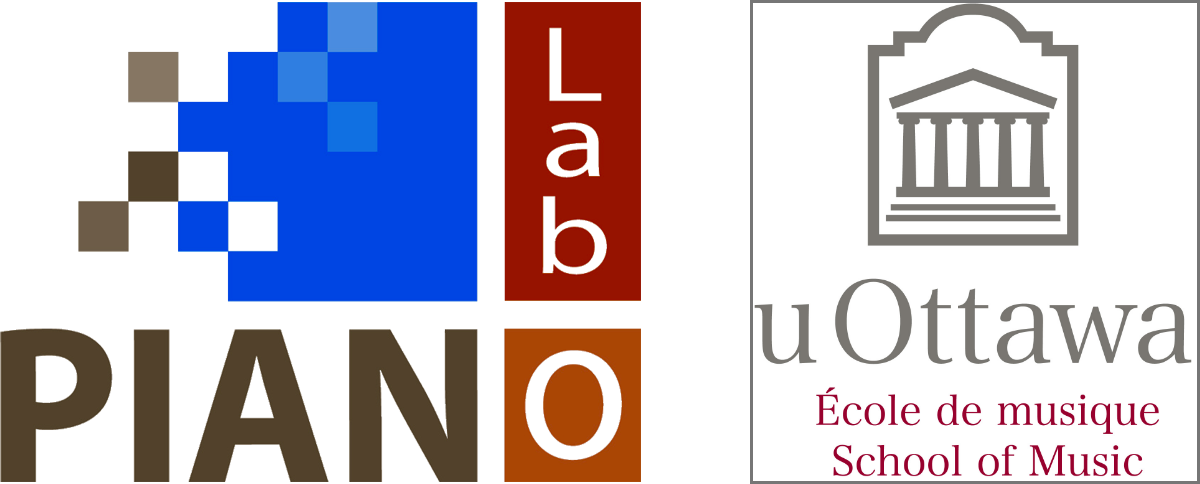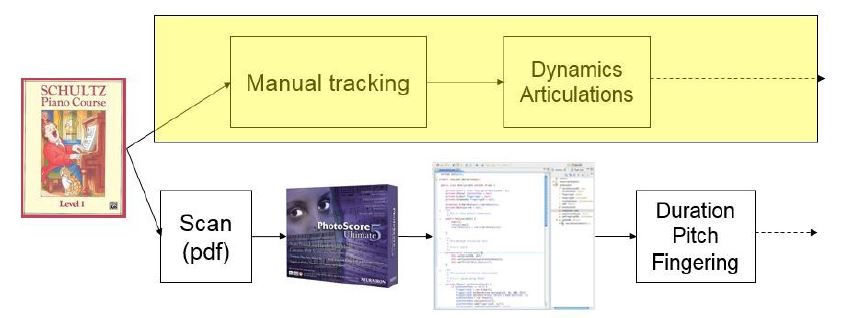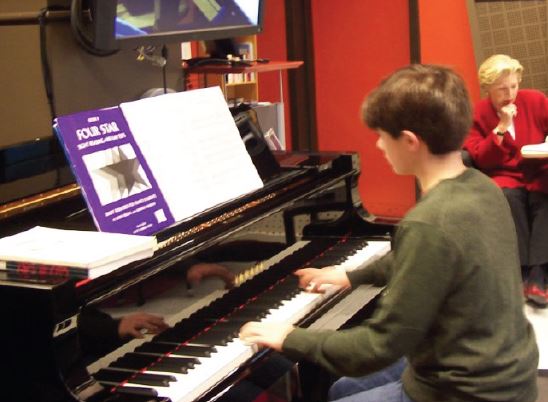Despite the popularity of method books in everyday music lessons, the type of repertoire found in each series had not been systematically analysed. An inventory of pieces found in North-American method books was undertaken to identify the type of music considered most important in each series. The results are a valuable source of information for teachers who are concerned about providing a variety of repertoire to their students (Lu, 2012).
Another study investigated whether piano method books are including the types of activities central to a well-rounded music education. A content analysis showed that while some activities (theory and teacher’s duets) are consistently valued by most manuals, there was a noticeable lack of creative activities like improvisation and composition and these tended not to be integrated within the main curriculum, but presented in accompanying books (Sundell, 2012).
Poster Learn to read music: Coding the visual environment presented by (Mongrain, 2015).
The presence of analogy in the piano manuals was studied to evaluate the importance placed on this teaching strategy and to identify the most common types of analogy being used (bodily, visual, functional and relational). The benefits of analogy for learning are many. Unfortunately, our study found that the use of analogy in piano books is often hidden or implicit (titles of pieces, illustrations, song lyrics) and rarely integrated as an informative tool (Morais, 2005).
Acquiring good technical skills is one of the main goals pursued by piano teachers. It was therefore important to investigate the technical elements included in piano method books in order to fully understand how they are introduced and find out which technical elements are missing in some particular manuals. These results provide piano teachers with thorough information on the elements of technique found in different method books and can help them to select the most appropriate method books for their students (Sung, 2015).
Future project: Following these detailed analyses of the main North American piano manuals, our next project is to publish a comprehensive content analysis and a comparison of the different book series commonly used for piano teaching. This book will be a valuable resource for researchers and an excellent textbook for graduate and undergraduate students studying piano pedagogy.

Seeing the lack of a comprehensive study of the Canadian piano examination curriculum, we undertook to explore the historical origins and evolutionary development of music conservatory examination systems. This historical study revealed a continually evolving process with a shift from more technique-based curricula to more emphasis on theory as well as a general expansion in repertoire selection. This survey provides interesting insights on the music syllabi and the examination system followed by many young piano students (Babin, 2005).



